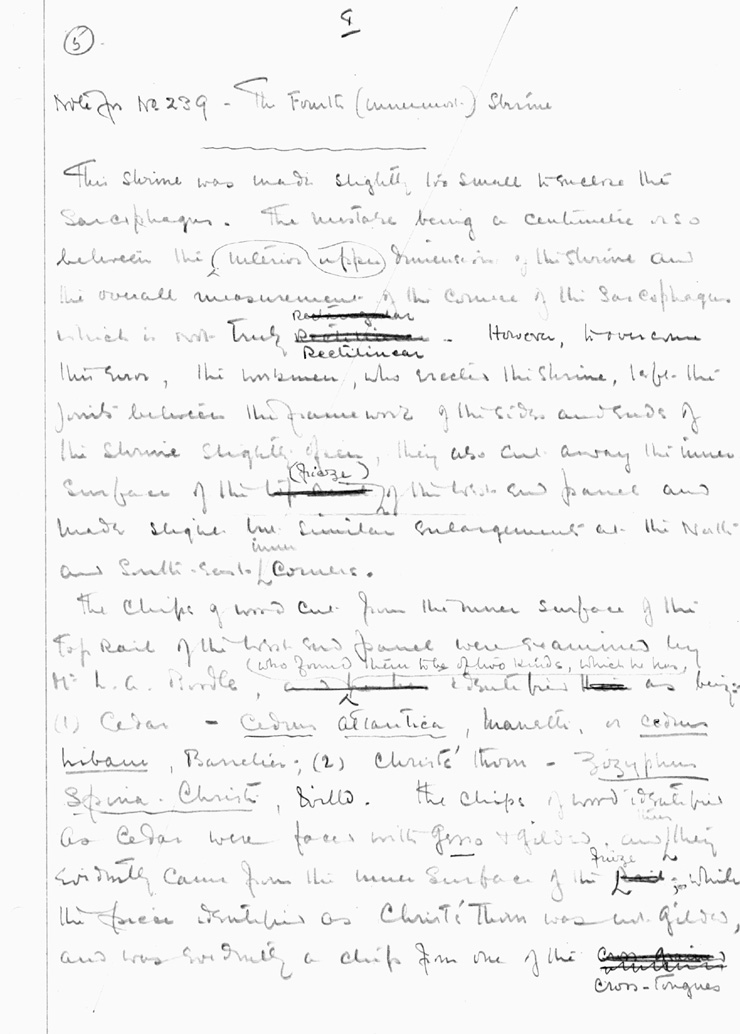Handlist description: Fourth (innermost) shrine
Card/Transcription No.: 239-07
8 Note for No. 239 - The Fourth (innermost) ShrineThis shrine was made slightly too small to enclose the sarcophagus. The mistake being a centimetre or so between the upper interior dimensions of the shrine and the overall measurement of the cornice of the sarcophagus which is not truly rectilinear. However, to overcome this error, the workmen, who erected this shrine, left the joints between the framework of the sides and ends of the shrine slightly open, they also cut away the inner surface of the frieze of the west end panel and made slight but similar enlargements at the North and South-East inner corners. The chips of wood cut from the inner surface of the top rail of the west end panel were examined by Mr. L. A. Boodle, who found them to be of two kinds, which he has identified as being: - (1) cedar - Cedrus Atlantica, Manetti, or Cedrus Libani, Barrelier; (2) Christ's Thorn - Zizyphus Spina Christi, [...]. The chips of wood identified as cedar were faced with gesso and gilded, and thus they evidently came from the inner surface of the frieze; while the piece identified as Christ's Thorn was not gilded, and was evidently a chip from one of the cross-tongues
